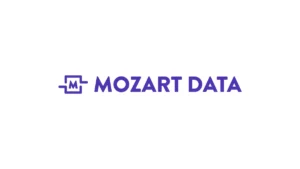When seeking improved business intelligence, it’s easy to make the mistake of focusing only on BI tools as the solution.
Functions of Business Intelligence Tools
- Reporting & Dashboards- Share key performance indicators (KPI) with decision makers.
- Forecasting – Project future sales, demand, and maintenance requirements.
- Visualization – Provide a visual way to interact with data and make new insights.
While a new analytics or visualization tool may unlock new insights into data, the biggest gains in business intelligence can come from time-saving and accuracy improvements to your data collection process.

By improving data collection, you can eliminate redundant data, typos, and missing data that threaten to render your analytics unreliable.
Upgrading to a modern ETL tool can remove manual data management tasks, giving your analysts more time to look for insights that will give you a data-driven advantage.
ETL tools
ETL (extract, transform, load) tools are the fundamental part of the data collection process that take bulk data in batches from their sources and move it to a central location.
Extract – Data is moved from its source into a staging area. Data sources can include structured and unstructured data from sources like databases, websites, CRMs, IoT devices.
Transform – Data is normalized using pre-programmed transform functions. Empty fields can be given 0 values. Duplicate data can be removed. The main goal is to better prepare data for analysis, but transforms can also support removing data for privacy and compliance reasons.
Load – Data is shipped to a storage location such as a data warehouse.
This entire process can also be automated with the right tools. Users can determine how often they want or need a data source to sync to their data warehouse, so they have accurate data when they need it, but don’t waste resources syncing tables that don’t need to be refreshed.
By providing an automated way to consolidate data, ELT improves business intelligence by strengthening data quality, reducing cost of running analytics, and speeding up the generation of insights.
Without an ETL tool, users may be using analytics in unconnected individual apps or shipping data directly to BI tools without uniform data management. ETL enables data analysts to break through data silos and combine data from a variety of tools, databases, and sources in a data warehouse.
What’s a data warehouse?
A data warehouse is a single source of truth that includes data from across your organization in a normalized format. Since they centralize data in an easy-to-use form, data warehouses make data more accessible to your employees and are a valuable resource for generating business intelligence.
Having a data warehouse enables sales, marketing, and customer success teams to self-serve prepared data without having to request help from engineers. This saves valuable time for both engineers and the people seeking data.
In terms of where data is actually stored, data warehouses can be self-hosted on its own infrastructure, cloud hosted, or hosted on software/hardware bundles known as data warehouse appliances.
A data warehouse can come in three different tiers of architecture:
- 1-Tier Storage – All data is combined in one repository to minimize total storage. This sacrifices the ability to run analytics and transaction processing of the data.
- 2-Tier Storage – ELT provides a staging area in which data can be transformed.
- 3-Tier Storage – Adds an online analytical processing (OLAP) server to arrange data for analysis and a front-end client layer for ease of access.
1-tier storage is exceptionally rare because it provides no minimal opportunities to edit data. Most data warehouses include at a minimum a 2-tier storage because of the benefits of ELT to the data management process.
Data warehouses are central to business intelligence. So much so that business intelligence and data warehouses are often combined when they are referred to as BIDW or BI/DW.
Look behind-the-scenes in the BIDW paradigm and you’ll find ETL tools providing the vital connections that make it run. ETL brings in new data to fill the data warehouse and ship data from the data warehouse to BI tools.
What are the challenges of using ETL for business intelligence?
If you are building them on your own, ETL tools require significant set-up and maintenance. You will need a professional data engineer to design your solutions and securely connect data. When it’s up and running, you’ll need specialists to update connections and custom-design connections.
In worst case scenarios, ETL maintenance tasks pull data analysts away from their work to such a degree that it ends up reducing the time they can spend conducting analysis.
There is a solution that removes these maintenance tasks. Modern ETL tools are easy to set up with a prebuilt pipeline and they keep data flowing with automatic updates.
Modern ETL for business intelligence
Mozart Data takes away the challenges of ETL and gives you what you need to transform your business intelligence, making it more productive and less time consuming.
Mozart uses industry leading ETL tools (Fivetran and Portable) to move data to an industry leading data warehouse (Snowflake).
While bundling best-of-breed ETL and data warehouse tools, Mozart provides a fully architected pipeline and destination for your data. Through its connections, Mozart maximizes the breadth of analytics by combining over 400 data sources.
By automating the actions of extracting, transforming, and shipping data to BI tools, Mozart saves you time on repetitive tasks and manual transfers, giving you more time to focus on data projects.
Find out how data management architecture with Mozart can unlock more accurate and actionable business intelligence. Contact us to learn more about modern ETL and data warehousing.

